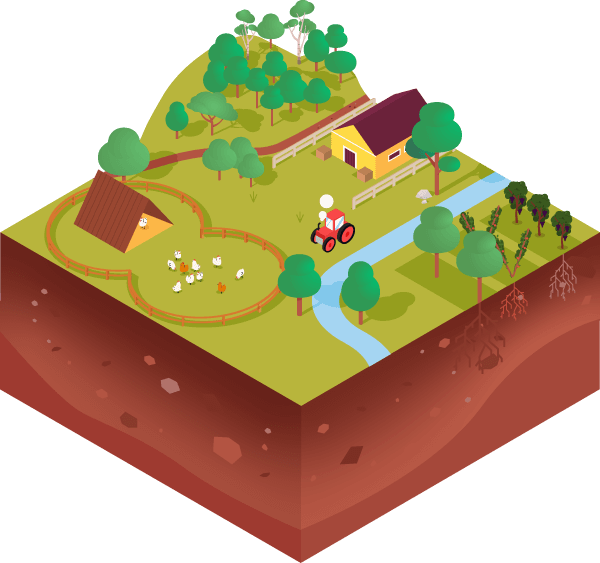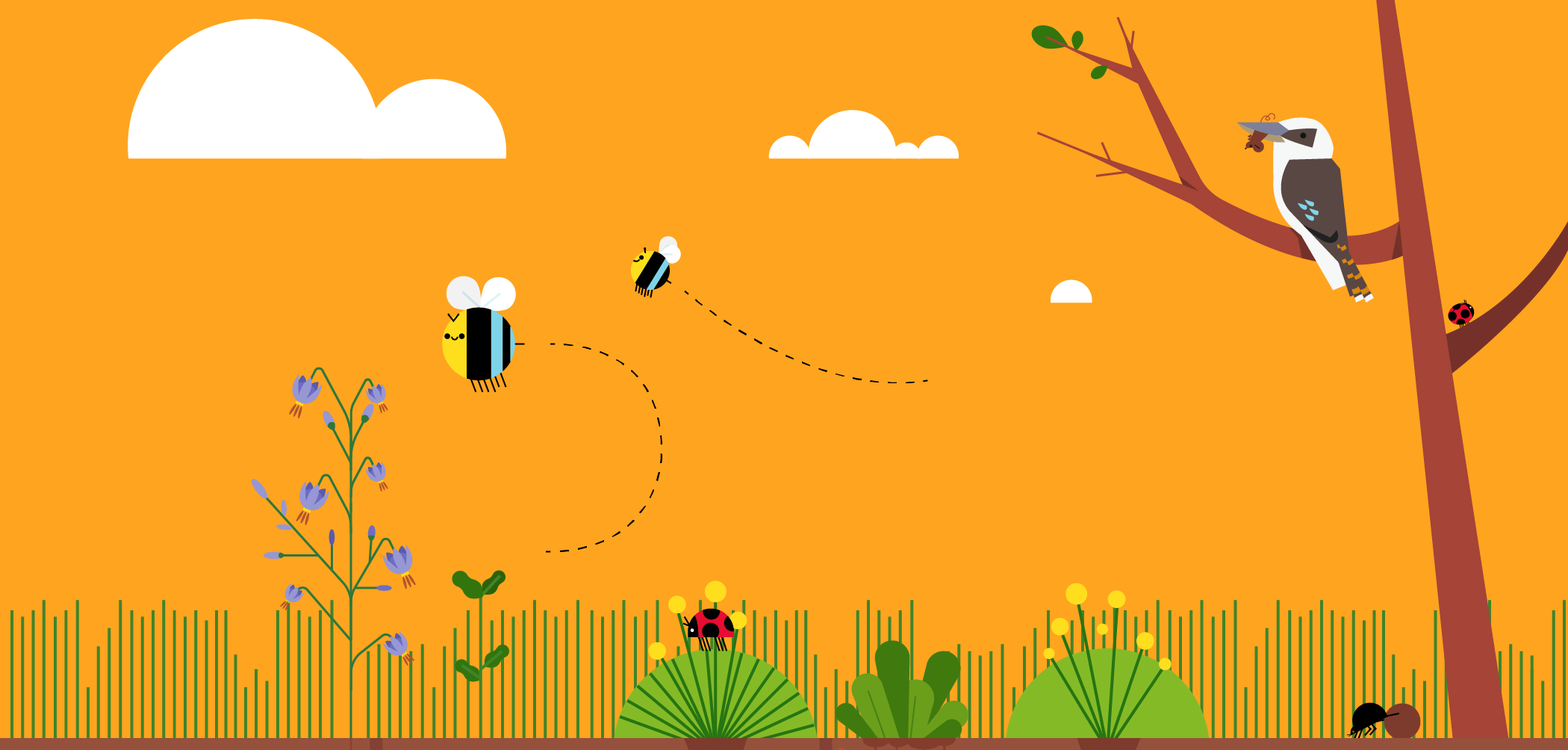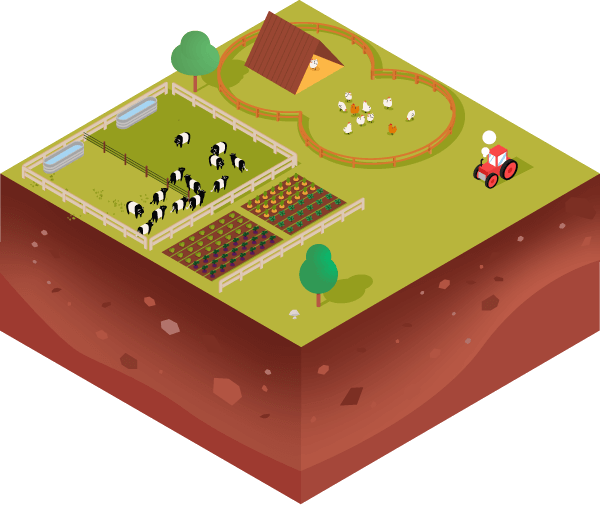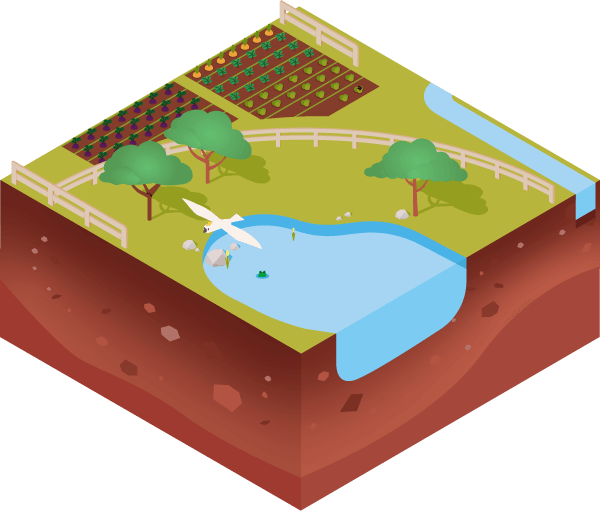Livestock and Biodiversity
A balance of density, time and design
Livestock can help a regenerative farm system to put back into – regenerate – the land. Animals graze, causing root die-back and carbon to be released into the soil. Animal manures contain food for microbes, and the pressing and scratching of animal feet helps to incorporate this matter into the soil.
It’s not so simple as allowing the cows to settle in and get grazing, however. Livestock integration needs to be carefully designed for each regenerative farm, taking into account the slope and aspect (and likely erosion events), size and weight of species, soil structure and risk of compaction.
Often, several species are grazed in ‘rotation’. This doesn’t mean the animals spin, it means different species are each given a turn at the resources in a paddock then moved away. They eat different plants, produce different nutrients and microbes in their manure, attract different insects, and behave differently.
Timing is everything: pastures must rest completely before livestock and allowed back in again.




